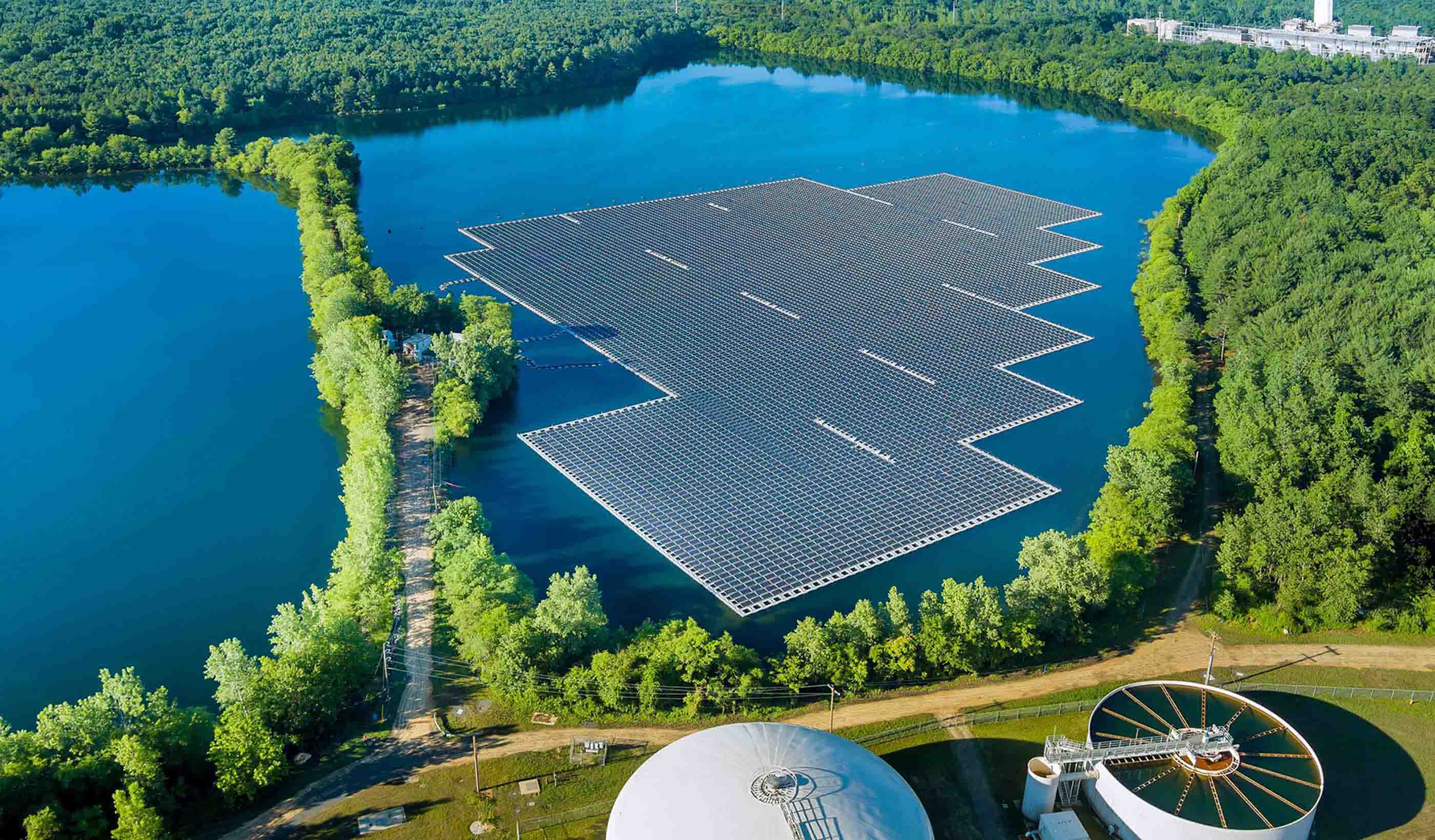Hydro batteries: Making renewables dispatchable
May 09, 2022
May 09, 2022
Steady growth in renewable generation creates demand for grid-scale energy storage. Existing hydropower reservoirs, acting as hydro batteries, can help.
As the world moves towards decarbonizing electricity production, renewables remain an integral part of the energy transition. But the effort requires other technologies to meet dynamic demands, too. As the amount of solar and wind generation rises and existing and new thermal generation decline, the roles and applications for conventional hydropower continue to expand.
The opportunity to integrate hydropower with other increasing renewables as part of larger clean energy systems have never been greater. The steady growth in renewable generation creates demand for grid-scale energy storage. Existing hydropower reservoirs, acting as hydro batteries, can help.
Below, we’ll look at what hydro batteries are and how they can help us achieve our sustainability goals.

The opportunity to integrate hydropower with other increasing renewables as part of larger clean energy systems have never been greater.
As energy consumers, we might take for granted that at every instant grid operators are balancing the supply and demand of electricity. Utilities have the added challenge of maintaining system frequency and voltage, which is made more difficult when the sun goes down or the wind isn’t blowing. The result? Large amounts of grid power suddenly disappear.
Although they provide valuable electricity, intermittent electricity sources like solar and wind do not produce consistent electricity and their power output cannot be controlled in advance. Enter dispatchable generation. These are power systems that can be turned on or off and can dynamically adjust the power output supplied to the electrical grid based on varying demand.
Some dispatchable energy sources—such as pumped storage, biomass, and geothermal—have been popular choices throughout the power industry. But one technology that has perhaps been overlooked is conventional hydropower.
As the world moves towards sustainable power, conventional hydropower offers a complementary steadying element in an integrated clean energy vision.
Conventional hydropower is by far the largest supplier of the world’s total generation of renewable energy. It has been developed and refined over a much longer period than wind power, solar generation, and battery storage. And the best part? It can provide bulk energy storage needed to smooth the intermittency of weather-dependent renewables.
The hydro battery concept is simple: Dispatchers are given control of the generation under a power purchase agreement so that energy can be stored in the form of water in the reservoir. When the dispatcher wants to store energy, hydro output is ramped down and water accumulates in the reservoir. When the dispatcher has a higher demand for energy or needs to maintain frequency and voltage, hydro output is ramped up.
The hydro battery may be used with on-site floating solar as well. This helps to create a hybrid system. The technology is more popular overseas where space for ground-mounted systems is less available. But it’s quickly emerging as a viable option in the US.
Not only is the reservoir readily available space, but floating solar panels and hydroelectric dams complement one another nicely. The floating solar panels reduce evaporation and further increase the available stored energy in the reservoir.

The hydro battery may be used with on-site floating solar.
Batteries excel at very fast response to grid demands but can be costly to utilities. So, how can we reduce the costs and improve their effectiveness?
The Dispatchable Integrated Generation System (DIGS) approach builds upon the hydro battery idea by combining hydropower, solar power, and a buffering battery that can be controlled in a coordinated manner. By combining a much smaller battery storage system with a hydro battery, the two provide a fast response even as it is depleted.
Utilities are investing in solar energy and scaling up investments in grid-scale batteries with sophisticated controls and software. The cost of such battery systems is declining but can be expected to remain in the range of at least $200 to $400 per megawatt-hour (MWh) of storage for the next decade or two. After that, the cost can be expected to drop significantly depending on the site.
The approach provides a cost-effective way to achieve both short- and long-term energy storage, without the need for a massive, grid-scale battery. The smaller battery used by DIGS mitigates exposure to supply chain issues and the unpredictable pricing of battery components such as lithium and nickel—a key advantage in today’s uncertain world.
Unlike a purely battery-based storage system in which 15% or more of the energy is lost due to thermal effects, the DIGS approach provides bulk energy storage without effective energy losses. The approach increases the total energy output due to its solar component—a win-win situation!

The Dispatchable Integrated Generation System (DIGS) approach builds upon the hydro battery idea by combining hydropower, solar power, and a buffering battery that can be controlled in a coordinated manner.
Based on data from the US Energy Information Agency, and assuming that about 25% of existing conventional hydro capacity can be made suitable for use as a hydro battery, almost all of the states in the US have significant conventional hydropower assets that could be deployed.
As the world moves towards sustainable power, conventional hydropower offers a complementary steadying element in an integrated clean energy vision. This vision demands we invest in all our options to succeed, including the dispatchable hydro battery.